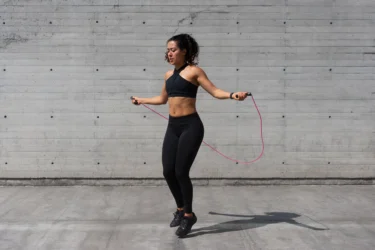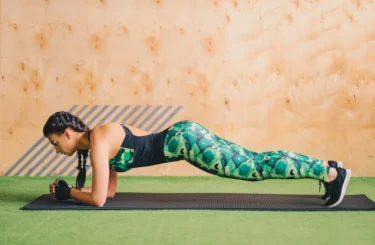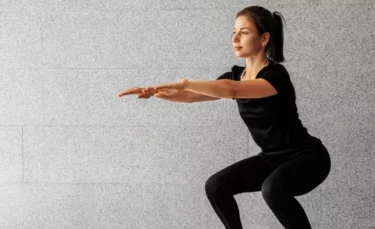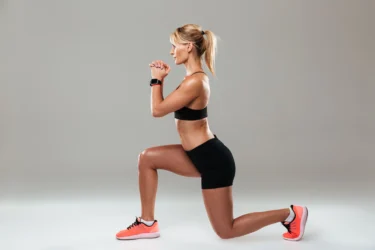Regular physical activity is a vital component of maintaining overall health. Exercise contributes not only to weight management but also supports cardiovascular health, bone strength, mood regulation, and general wellbeing.
It is important to understand that both exercise and diet work together to support sustainable weight management. If one is prioritised while the other is neglected for example, exercising regularly without dietary changes, or following a diet without physical activity the body’s response may vary. This could lead to slower progress, fatigue, or changes in metabolism1.
Additionally, other factors such as sleep quality, stress levels, certain medical conditions (e.g., hypothyroidism, polycystic ovary syndrome), and medications can influence how the body responds to efforts aimed at weight loss.
For individuals diagnosed with conditions such as diabetes, incorporating exercises for diabetes which are appropriate to their health status can be beneficial. However, any exercise regimen should be discussed with a healthcare provider to ensure safety and effectiveness.
Here, we outline seven effective and popular exercise programmes that can be practised at home, helping you improve strength, fitness, and overall wellbeing, without the need for gym access or specialised equipment.
For those aiming to manage their weight, a combination of cardiovascular activity and resistance training, performed consistently, may offer benefits when paired with a balanced, calorie-conscious diet. Incorporating resistance training at least twice a week may help maintain muscle mass during weight loss.
Some research has explored whether the timing of exercise, such as working out in the morning affects weight loss or muscle development2. Cortisol, a hormone that follows a natural daily rhythm, typically peaks in the early morning. However, its effects are complex. Elevated cortisol levels under stress can sometimes contribute to muscle breakdown and fat retention. Current evidence does not conclusively support a “best” time of day for exercise that applies to everyone.


Walking is widely regarded as an accessible and low-impact form of cardiovascular exercise. When performed at a brisk pace, it can support calorie expenditure and be easily integrated into daily routines. It is also gentle on the joints, making it suitable for individuals across a wide range of fitness levels.
Some observational studies have noted that individuals who walk for 50–70 minutes, three times per week, may experience modest reductions in body fat and waist circumference over time. However, results can vary depending on individual factors such as diet, metabolism, and overall activity levels.
Jogging and running are more vigorous forms of aerobic exercise and involve higher levels of intensity. These activities primarily engage the lower body and cardiovascular system, and they may contribute to improved endurance, heart health, and calorie expenditure. The key distinction between jogging and running lies in the pace, jogging typically ranges from 6–9 km/h, while running generally starts from around 10 km/h.
On average, a person may burn approximately 298 calories in 30 minutes of jogging and 372 calories in 30 minutes of running, though actual figures depend on body weight, intensity, and terrain. While these exercises can assist in reducing overall body fat, it is important to note that fat loss from specific areas, such as the abdomen cannot be targeted directly and depends on total fat reduction and individual physiology3.
Although jogging and running can help maintain muscle tone, especially in the lower body, significant gains in muscular strength typically require resistance training or structured strength-based workouts.
Exercise Pattern
Set aside 1 hour of your time and include these exercises in your routine.

While skipping can assist with muscle toning and calorie expenditure, significant muscle strength gains require dedicated resistance training. It may also support mood and stress management, but it is not a substitute for professional mental health care4.
As with any exercise, individual results may vary depending on fitness level, diet, and consistency.
Exercise Pattern

The plank is a core stabilisation exercise that targets multiple muscle groups including the abdominals, shoulders, back, chest, and hips. Though it appears simple, it requires muscular endurance and can be physically demanding when performed correctly.
Planks help improve core strength, posture, and body balance, and come in various forms to target different muscle areas. While not designed for high calorie burn or direct fat loss, planks are valuable for enhancing overall stability and muscular endurance5.
Increasing the duration and consistency of plank practice may lead to better functional strength and support in other forms of exercise.
Plank Exercise Variations
Exercise Pattern
The Reverse Plank: This exercise is a variation of the standard plank, performed in a reversed position. It is an excellent way to stretch the body while also helping to reduce excess fat and calories. Additionally, this workout strengthens the core, shoulders, back, chest, and gluteal muscles.
Exercise Pattern

Push-ups are a widely practised bodyweight strength exercise that require no equipment and can be performed virtually anywhere. They primarily target the chest, triceps, shoulders, and core, helping to build upper body strength and muscular endurance.
While push-ups do not burn as many calories as aerobic exercises, they contribute to muscle development, which may support long-term weight management by modestly increasing resting metabolic rate6.
Regular push-up training can improve overall physical stability and strength, particularly when combined with other forms of exercise such as cardio or resistance training.
Exercise Pattern
Push-ups are a widely practised bodyweight strength exercise that require no equipment and can be performed anywhere. They primarily target the chest, triceps, shoulders, and core, contributing to the development of upper body strength and enhancing muscular endurance.
While push-ups do not burn as many calories as aerobic exercises, they contribute to muscle development, which may support long-term weight management by modestly increasing resting metabolic rate.
Regular push-up training can improve overall physical stability and strength, particularly when combined with other forms of exercise such as cardio or resistance training.
Exercise Pattern

Squats are a lower-body strength exercise that primarily target the thighs, hips, and glutes. They help improve mobility, balance, and muscular endurance, making them a fundamental part of many fitness routines.
While squats may contribute to calorie expenditure and muscle toning, their main benefit lies in strengthening the lower body. Beginners are often advised to start with 3 sets of 12–15 repetitions, focusing on proper form to avoid injury and maximise effectiveness7.
Exercise Pattern:

Lunges are a lower-body strength training exercise that primarily target the quadriceps, glutes, hamstrings, and engage the core for stability. They are effective for building lean muscle, improving balance, coordination, and lower body endurance.
While lunges can be part of a fat-loss programme when included in a high-intensity routine, their primary role is in toning and strengthening. Using added weights can further enhance their effectiveness, especially for athletic training and improved overall fitness8.
Exercise Pattern
Along with exercises that need to be done at your place for weight loss. There are other factors and methods that can be helpful for weight management.

Yoga is an ancient practice that integrates physical postures, controlled breathing, mindfulness, and relaxation. When combined with healthy eating and regular activity, yoga may support weight management, improve mental wellbeing, and enhance body awareness9.
While not primarily focused on calorie burning, yoga promotes stress reduction, which can positively influence lifestyle habits. Some forms of yoga may also support flexibility, balance, and metabolic health such as yoga for diabetes, making it a valuable addition to a holistic wellness routine.
Along with supporting weight management, yoga offers a range of additional benefits, including:
Specific yoga poses play a supportive role in weight management by enhancing muscle tone, balance, and concentration. Regular practice helps the body adapt to these movements, allowing you to gradually improve strength, flexibility, and mind-body awareness, all of which contribute to overall well-being and fitness.
Some of the yoga poses that should be practiced for weight loss are:
Below is a general guide to the approximate number of calories burned during various exercises, based on moderate intensity. Actual values can vary depending on factors such as body weight, age, fitness level, workout intensity, and duration:
While many prefer to exercise in the morning, especially on an empty stomach, believing it may support fat metabolism, the most important factor is consistency. Morning workouts can help align your circadian rhythm, supporting better sleep and routine adherence over time.
Some studies suggest evening workouts may improve performance due to increased body temperature and oxygen efficiency. However, research remains inconclusive. Ultimately, the best time to exercise is the time that suits your schedule and lifestyle, allowing you to remain active regularly and sustainably.
Also Read: 8 Effective Exercises That Help with Weight Loss!
Follow these tips to make sure your weight loss programme at home is done properly:
Also Read: Benefits of Doing the Plank Exercise Every Day
No, weight loss is a combination of regular workouts and a proper diet. It is important to ensure to follow both to achieve the desired results.
No, sweating is your body’s natural way of regulating temperature. As your internal temperature rises, your body releases sweat, which cools the skin through evaporation. It is a sign of thermoregulation, not necessarily an indicator of calorie burn or workout intensity.
To improve fitness and maintain good health, it is advisable to exercise at least 2–3 times per week consistently, rather than sporadically. Regular workouts yield better long-term results.
A general way to estimate daily calorie intake for weight maintenance is to multiply your ideal body weight (in pounds) by 14. For example, if your ideal weight is 135 pounds, you may need around 1,890 calories per day (135 × 14).
Some initial weight loss in a week is possible through regular exercise, mindful eating, and increased activity. However, early changes are often due to water loss, not fat. For safe and lasting results, aim for 0.5 to 1 kg per week through a balanced diet, moderate calorie deficit, and consistent physical activity.
Weight loss occurs when you burn more calories than you consume. While reducing calorie intake can lead to a calorie deficit, completely avoiding food is not a healthy approach. The body may slow its metabolism and trigger energy conservation, making weight loss harder over time. It’s essential to eat balanced, nutritious meals to support both health and sustainable weight loss.
Any foods with high carbohydrates and fats should be avoided if you want to lose weight. These include french fries, potato chips, white bread, pastries, cookies and sugary drinks.
Disclaimer: The information provided here is for educational/awareness purposes only and is not intended to be a substitute for medical treatment by a healthcare professional and should not be relied upon to diagnose or treat any medical condition. The reader should consult a registered medical practitioner to determine the appropriateness of the information and before consuming any medication. PharmEasy does not provide any guarantee or warranty (express or implied) regarding the accuracy, adequacy, completeness, legality, reliability or usefulness of the information; and disclaims any liability arising thereof.